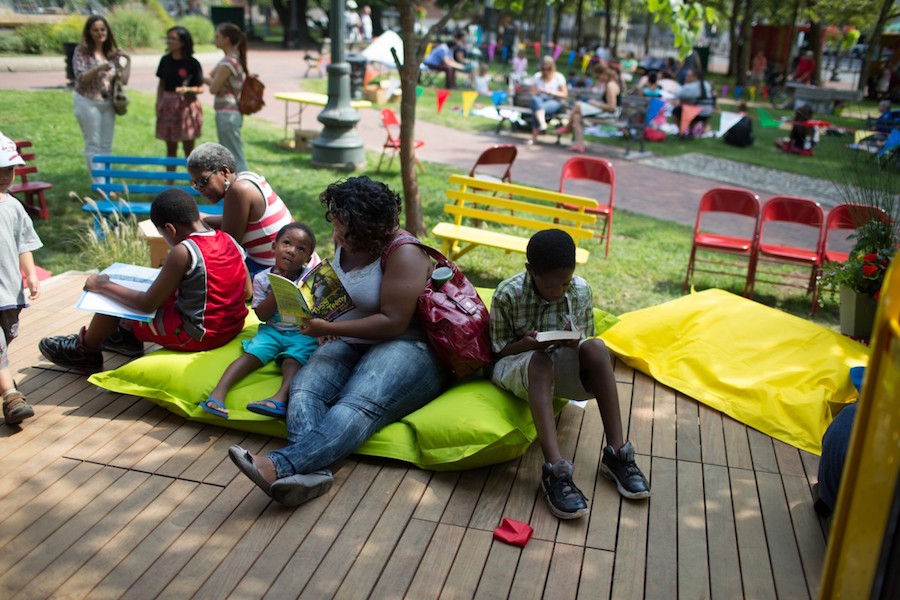A family-friendly placemaking campaign in Providence, RI. Photo by PPS
The placemaking movement is all about creating hands-on, collective solutions to improve a neighborhood, city, or region—to make it more shareable. It capitalizes on existing community assets and results in public spaces that improve people’s health, happiness, and well being. As the Project for Public Spaces (PPS) website explains,
Placemaking refers to a collaborative process by which we can shape our public realm in order to maximize shared value. More than just promoting better urban design, Placemaking facilitates creative patterns of use, paying particular attention to the physical, cultural, and social identities that define a place and support its ongoing evolution.
If you want to create a local placemaking campaign in your town, PPS recently shared the following five tips to help make it happen.
1. Join the Placemaking Leadership Council
The Placemaking Leadership Council is a community of over 1,000 activists sharing knowledge about placemaking. You can be a placemaker without becoming a member, but as PPS points out, joining gives you access to a community of people around the world facing similar challenges.
2. Organize a Team and Meeting
Scaling placemaking from a single project into a campaign is a team effort. Create a list of interested people, decide on ways to keep in touch, and make plans to meet in-person. Not sure where to start? PPS may be able to put you in touch with placemakers in your area.
3. Define the Problem and the Potential
Once you’ve gathered your placemaking team, identify the major obstacles to creating better public places in your community. Here are some ideas from PPS to get the ball rolling:
- Does your city lack access to local food?
- Is your city known for its stubborn government agencies?
- Does your Department of Transportation prioritize cars over people?
- Do you need a community vision for public space?
- Is your local government easily wowed by flashy designers and architects?
- Are your public spaces built to exclude some group of people?
Once you pinpoint the obstacles, discuss the potential your community has for placemaking. What already-available resources can be utilized? PPS recommends asking:
- Are there vacant lots that could be transformed?
- Is there a local business that could host a farmers market?
- Is there a street that can be rightsized?
Note: PPS’s Power of 10 tool can help you figure out which spaces in your neighborhood are working and which ones have room for improvement.
4. Start the Campaign
Now for the fun (and most challenging) part: start your placemaking campaign. Stay focused on a single project and grow from there. PPS advises using every tool available to you and to include the following in your approach:
- Start a petition
- Reach out to government officials
- Identify other local organizations to partner with
- Be persistent.
“It can be a long road,” explains the PPS website, “but the end result will be well worth the wait.”
If you reach an impasse, PPS is available to help develop a community vision. Or, you can attend one of their training sessions to learn specific placemaking tools and techniques.
Need more help getting started? PPS recommends the following resources:
- Streets as Places resource page
- Blog post outlining some essential elements of a placemaking campaign
- Participatory Planning Guide from the Montréal Urban Ecology Centre
- List of innovative programs for funding placemaking
- Connect with ioby, an organization that mobilizes neighbors and citizen leaders
5. Share the News
Once your placemaking campaign is live, share the news of it with the global placemaking community. Email PPS at info@pps.org or tweet @pps_placemaking. They may feature your campaign on their website or social media and they can connect you with people around the world who are working on similar projects.
##
Follow @CatJohnson on Twitter









